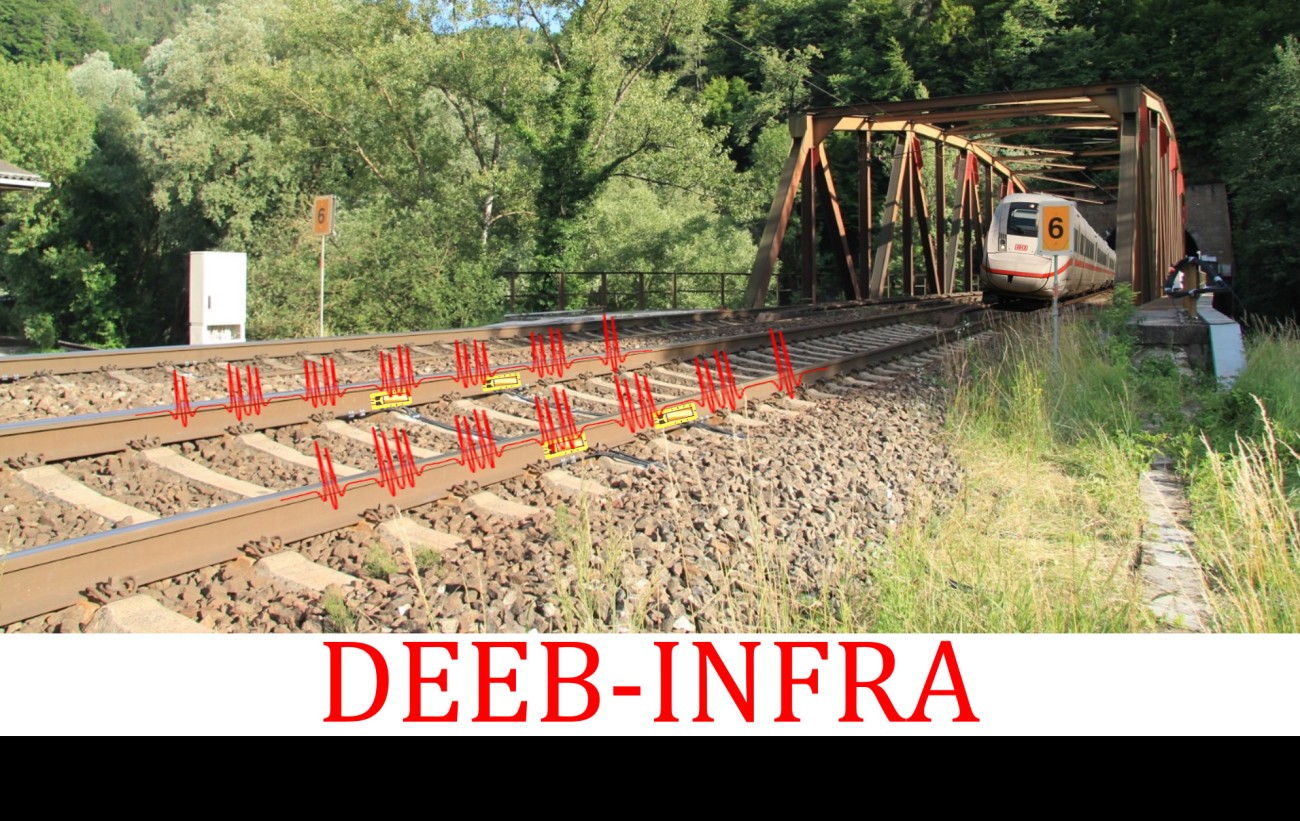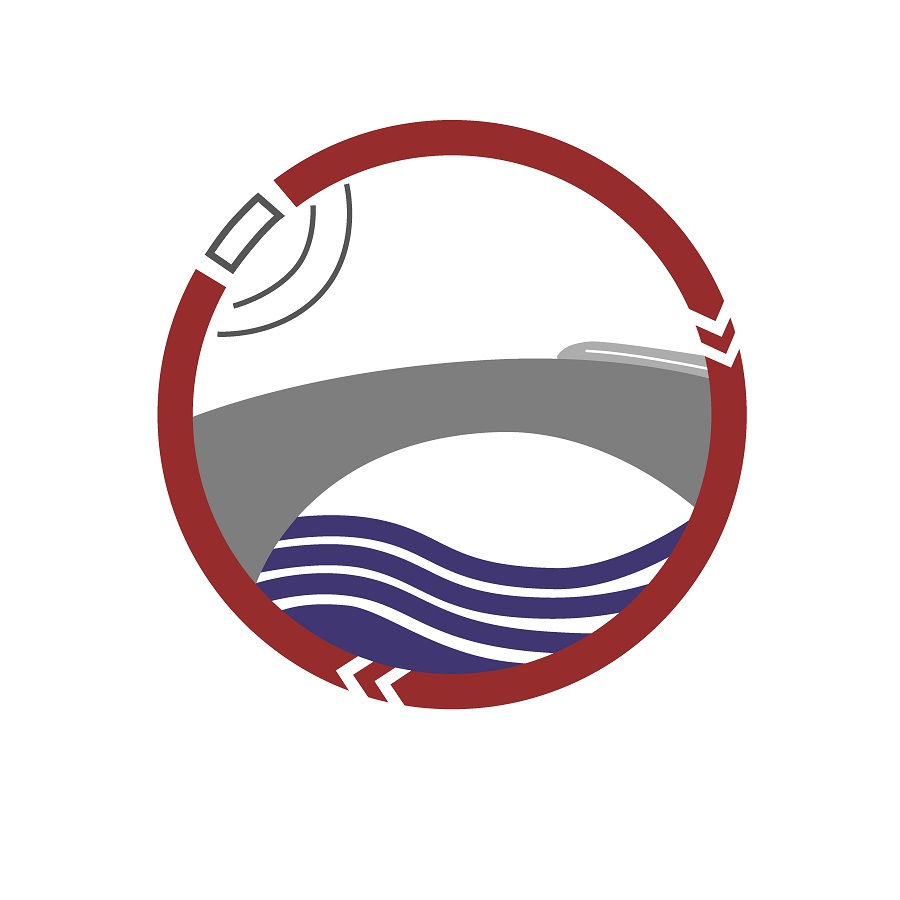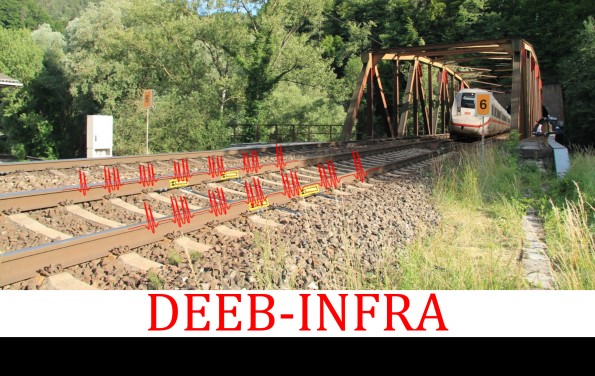| Project name | Data-based extrapolation model for determining real operating load trains for (residual) service life analysis of railroad INFRA structural systems |
|---|---|
| Acronym | DEEB-INFRA |
| Project partner |
|
| Grantor | Federal Ministry for Digital and Transport |
| Duration | 3 years |
|
Research field |
M+M (E+E > Energy + Environment I+I > Information + Intelligence M+M > Matter + Materials) |
| Project content |
The interdisciplinary analysis of data from sensor systems installed in the European railway infrastructure opens up new possibilities for the condition assessment of existing railway facilities, especially bridges. So far, axle load measuring points (ALM) on European railway lines have been used for detecting wheel defects or sorting out trains with excessive loads. Inherently, these systems also capture data that contains additional information, which is currently not fully utilized. This project aims to leverage the data already collected by existing ALM in the European railway network for the remaining life analysis and maintenance planning of infrastructure, particularly bridges. The goal is to optimize the timing of necessary reinforcement measures or new construction, better control inspection intervals, achieve significant cost savings for the operator, and improve network availability. Currently, there are approximately 23 ALM (DafuR systems) in Germany and eight operating high-precision ALM in Austria (60 ALM planned for ÖBB by 2025, i.e., about 1 ALM/80 km). These systems measure the “purely” static axle loads and axle spacings of trains on open tracks. Despite the relatively low number of existing German ALM (about 1 ALM/1500 km), this project aims to enable comprehensive and realistic remaining life analysis of bridges based on real loads without the need for costly and time-consuming installation of network-wide ALM. This is achieved by making use of a second class of (existing) data, including data from structural monitoring, operational and network data of infrastructure companies, and ALM data from neighboring countries (AUT, CH, NL). By combining this data with structural analysis and mathematical optimization algorithms, the project can reconstruct the dynamic loads resulting from vehicle/bridge interaction, serving as a cost-effective basis for remaining life analysis. The results can also be used for future operational optimizations or in future communication systems between infrastructure and vehicles (I2V communication) by automatically adjusting speed at critical structures to extend their lifespan. The holistic analysis of the aforementioned data from multiple European countries allows for calibrating measurement systems to each other, harmonizing data quality in the European context, and statistically transferring results to non-sensor-equipped structures and routes in Germany. |
Department of Civil and Environmental Engineering

Research project DEEB-INFRA
Data-based extrapolation model for determining real operating load trains for (residual) service life analysis of railroad INFRA structural systems
Research project DEEB-INFRA
Data-based extrapolation model for determining real operating load trains for (residual) service life analysis of railroad INFRA structural systems





